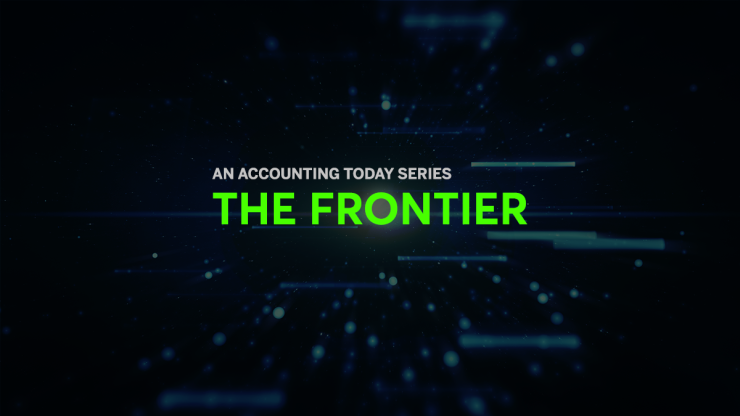Technology has the potential to transform the accounting profession so that it can meet the challenges of a rapidly changing business environment. Meeting this potential, though, requires that accountants evolve not only their tools but their mindsets on how those tools are applied. Unfortunately today, there are many who have embraced the former while ignoring the latter, which has held the profession back from taking full advantage of emerging technologies.
In this installment of the Frontier, we look at an issue noted by several thought leaders in the accounting technology arena: a change in tools without a change in mentality. While accountants have access to sophisticated hardware and software, much of it is used not to develop new processes and procedures but, rather, to execute the old ones more efficiently.
Jim Woodard, leader of Woodard Events, which runs the Scaling New Heights accounting technology conference, pointed to file management as an example. At the dawn of the personal computer, he noted, people referred to a computer file as a “file” because they were mimicking physical reality. Because of this, he said, users got into a mindset of treating their digital files in a similar way to physical ones, where you had a file put into a folder which was put into a cabinet, all arranged in a hierarchical structure. But he said that computer files now are so different from physical files then and it’s folly to try to relate to them in the same way.
“We need to be unlearning what we’ve learned about file management. It needs to be contextualized into workflow. It needs to be tagged as its primary source of discovery, as opposed to location-based, and it must be stored in a system that is indexed, because only through indexing can we retrieve documents internally, like we discover information on the web,” he said.
He pointed to platforms like Microsoft 365: From there, Woodard said, he can search for any piece of text string, client name, tax year or (better yet) combinations of them all, which allows him to locate any document. This is in contrast to digging through folders and subfolders for the exact thing you need, something that can happen both in physical file systems and digital systems made to mimic those same physical systems.
Geni Whitehouse, the “Countless of Communication” who leads the Impactful Advisor, warned that this mindset can cause a feedback loop that could potentially trap practices in older models because that’s what the software was developed for. Timesheets are one example: She noted that more and more firms are moving towards fixed fees versus billable hours. Even in this model, however, there is still a need to “know at some level what kind of effort we’re expending and how we allocate our day.” She said a lot of the current set of software for accounting practices, though, is not very good at this when working with a fixed-fee model.
“Most timesheet tools we use for traditional accounting firms are very old, they still use DOS. With time tracking, we [don’t yet] see it working with firms that do fixed fee pricing. But we still need to know how long it will take so we can allocate resources and schedule people to work. So there’s a challenge in that,” she said.
Roman Kepczyk, director of firm technology strategy for Right Networks, noted that putting old processes in new technology can at times make one wonder just how far things have actually advanced. He pointed to organizing client data: Before, he said, clients would give their accountants a pile of paper and they’d move it around their desks as they worked through it. Today’s accountant, by contrast, tends to receive their documents electronically, whether through email attachment or client portal or cloud storage. And what do they do when they get it?
“Now people are still manually pushing stuff around, just on a screen, but no different than what we did on paper. They digitized the process, but didn’t automate or transform it,” he said.
Kepczyk said this can come from recognizing change is coming but not being too thrilled about it. When this happens, the professional is more interested in how they can implement technology with as little disruption as possible to their general procedures, something more commonly seen among those who have been in the profession for a very long time.
“They know their processes because they’ve been doing it for 20 years. And what they do wrong is digitize their old processes. They think, instead of having a client deliver a paper document they can email it to me or send it through a portal. Oftentimes they focus on what they know, and instead of transforming the process, they basically digitize what they did before, exactly the same way, as opposed to finding a better way of doing it,” he said.
L. Gary Boomer, strategist and visionary at Boomer Consulting, said this is all understandable, but unfortunate. While acknowledging we all have preferred ways of doing things, it is a mistake to hew to them relentlessly when better solutions exist. He stressed that it’s important for firm leaders to think of technology in terms of building changes in the workforce versus focusing only on services they’re already offering, “in the same way and the same pricing model.”
“It’s about business transformation. … That is really based on skill sets, toolsets and mindsets. You’re seeing a lot of skills becoming obsolete, but if you don’t have the mindset to update your skills and be a continuous lifelong learner, then that can be a challenge,” he said.
This story is part of an Accounting Today series called “The Frontier,” where we explore the cutting edge of accounting technology through conversations with thought leaders across the country, who will share with us their observations, hopes, concerns and even a few predictions here and there. We’ll see you at the Frontier.
See the rest of






